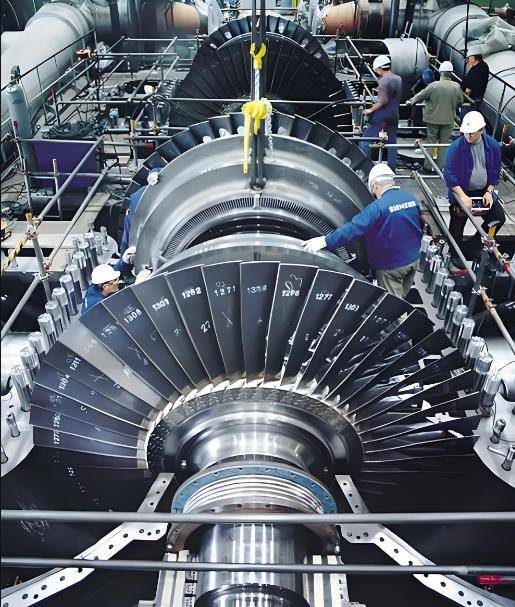Want to know more?
Don't miss any product updates on our industrial borescopes

Industrial borescope
solution service provider
Company Address
Office : 18F, Pingshanshouzuo, Pingshan District, Shenzhen,Guangdong
Contact Info
Ph: +86-0755-89588241

Industrial endoscopes play a vital role in aircraft turbine inspections, and their application runs through the entire process of daily maintenance, troubleshooting, and performance evaluation of turbines. The following is an analysis from four dimensions: core technology advantages, typical application scenarios, technical features and innovative functions, and actual application cases:

Non-destructive testing (NDT)
Industrial endoscopes penetrate deep into the turbine through flexible probes, and can complete detection without disassembling key components, avoiding secondary damage that may be caused by traditional detection methods. For example, when inspecting turbine blades, you can bypass complex pipelines and directly observe the blade surface, significantly shortening downtime for maintenance.
High-resolution imaging and micro-defect identification
Equipped with high-definition cameras (such as 720p to 4K resolution) and digital magnification technology, it can clearly capture microcracks (minimum detection accuracy of 0.01mm), ablation pits and thermal fatigue marks on turbine blades. In one case, a 0.05mm crack on the edge of the blade was found through an endoscope, and early intervention avoided the risk of engine parking in the air.
Three-dimensional measurement and data analysis
Some high-end endoscopes (such as Delong SV pro) support three-dimensional stereo measurement, which can accurately measure parameters such as the aperture, wall thickness, and curling angle of turbine blades with an error of less than 0.01mm. The measurement data can generate a test report to provide a quantitative basis for maintenance decisions.
Intelligent analysis and automated detection
Modern endoscopes integrate AI defect recognition algorithms, which can automatically mark abnormal areas such as cracks and corrosion, and support the function of taking photos during video recording, which is convenient for recording abnormal working conditions. For example, the Gas Power assist model carried by the Welin industrial endoscope can assist in identifying internal defects of gas turbines and improve detection reliability.
Turbine blade detection
Damage monitoring under high temperature and high pressure environment: As a core component that withstands extreme working conditions, blades need to be regularly inspected for surface cracks, oxide layers and thermal deformation. Industrial endoscopes can penetrate deep into the gaps between blades and detect areas that are difficult to reach.
Vibration-induced microcrack investigation: An aircraft engine manufacturer found through an endoscope that 90% of the first-stage turbine blades had vibration cracks, and timely repairs extended the service life of the blades.
Combustion chamber and turbine disc detection
Combustion chamber crack detection: Observe the inner wall of the combustion chamber through an endoscope to find microcracks caused by thermal stress and prevent the risk of combustion chamber rupture.
Turbine disc bolt connection inspection: Confirm the tightening status of the bolts and the wear of the threads to avoid mechanical failures caused by looseness.
Oil circuit and cooling system inspection
Evaluation of internal cleanliness of oil pipeline: Check carbon deposits and metal debris deposition on the inner wall of turbine oil circuit to ensure the normal operation of lubrication system.
Cooling channel blockage detection: Use endoscope to observe whether cooling channel is blocked by foreign matter to prevent turbine overheating.
Portability and durability
The integrated design (weight about 1kg) and lithium battery power supply (battery life 4 hours) are suitable for detection in small space.
The outer skin of the probe adopts double-layer tungsten wire weaving + polyurethane coating, which is resistant to high temperature and wear, and suitable for the harsh environment inside the turbine.
Flexible control and wide field of view
The probe supports 360° rotation and multi-directional bending, which can cover the complex structure inside the turbine (such as S-shaped pipeline).
The symmetrical light outlet design provides uniform lighting, eliminates metal reflection interference, and improves observation clarity.
Data management and remote collaboration
Supports local storage and cloud sharing of detection data (images, videos, measurement results), which is convenient for collaborative analysis among multiple departments.
Connect mobile devices through WIFI or Bluetooth to achieve real-time remote monitoring and expert consultation.
Aerospace engine blade inspection project
Background: An airline company found that multiple engines had abnormal vibrations and suspected that there were hidden dangers in the turbine blades.
Implementation: Used a three-dimensional measurement industrial endoscope to inspect more than 1,300 blade branch pipes, found cracks and accurately measured their length and depth.
Results: After repair, the engine vibration value was reduced by 60%, and the maintenance cost was reduced by about 40%.
Troubleshooting of military aircraft turbine discs
Background: A certain type of military aircraft turbine disc had abnormal wear, and traditional detection methods could not locate the problem.
Implementation: Used an ultra-fine probe endoscope to penetrate into the gap of the turbine disc and found local overheating caused by blockage of the cooling channel.
Results: After optimizing the design of the cooling system, the life of the turbine disc was extended to 1.5 times the original design.

Industrial endoscopes have become an indispensable "industrial doctor" in aircraft turbine inspection, with their technological advantages (non-destructive, high-precision, intelligent) and functional innovations (3D measurement, AI analysis) significantly improving inspection efficiency and safety. With the integration of materials science and AI technology, endoscopes will develop towards smaller probe sizes and higher levels of automation in the future, further ensuring the safe operation of aircraft engines.

Industrial borescope
solution service provider